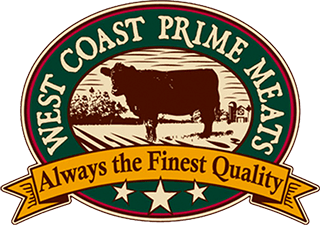21 Tools Every Kitchen Should Have
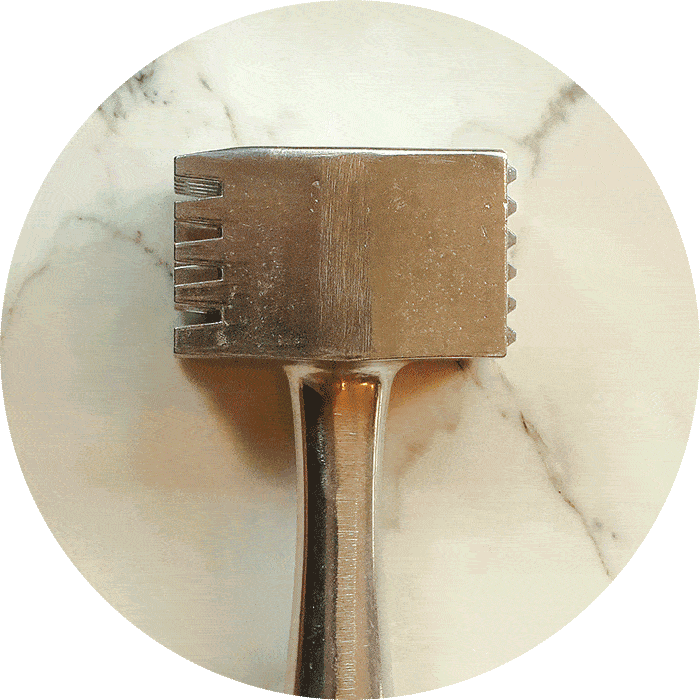
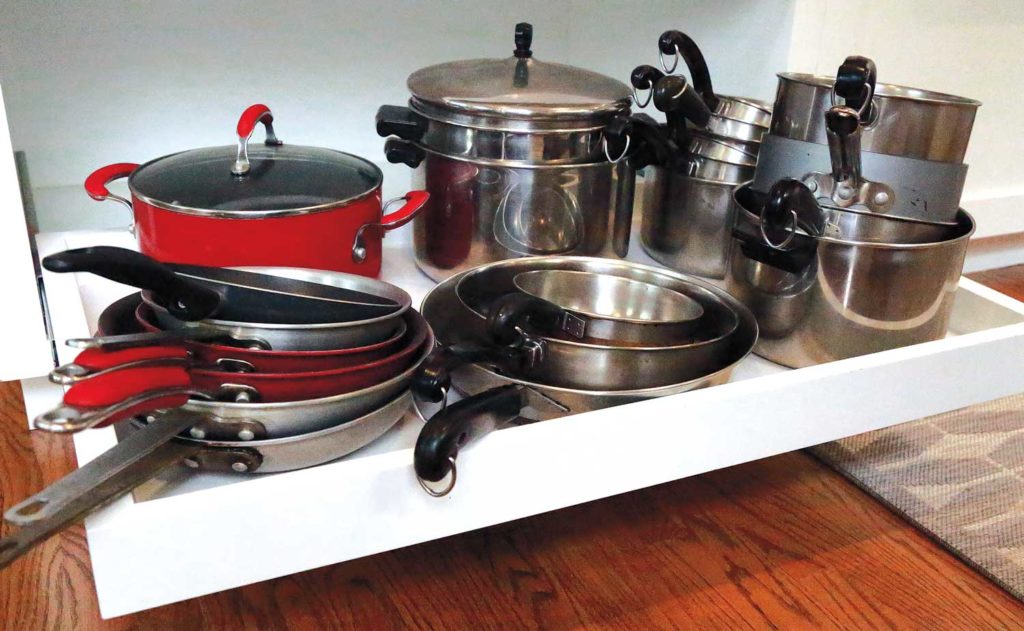
Every kitchen should have an assortment of sauté pans (also called frying pans), sauce pots and sheet pans (cookie sheets). For the recipes on our website, we also recommend:

1. Blender & 1b. Immersion blender or wand
We recommend two kinds: the canister (or bar) blender, like the Vitamix or the Waring, which lets you see measurements of ingredients and has a sealed container; and (1b) the immersion blender or wand, which is great for puréeing sauces and soups.
2. Butcher’s twine
This sturdy cotton string is available in most grocery stores, does a tidy job of tying roasts and meat rolls and won’t fray or fall apart during cooking.
3. Cast iron skillet
A hand-me-down cast iron skillet is often coveted, both for the memories of meals made in that pan and for the years of seasoning it contains. These incredibly durable pans create the perfect crust on a burger or steak and require little maintenance once properly seasoned. To season a new pan, wash it thoroughly first in warm, soapy water. That should be the last time your skillet meets soap. Rub vegetable oil thoroughly all over the pan and bake it in a 325-degree oven for one hour. Remove the pan, rub it down with vegetable oil again and bake it for one more hour. Remove the pan, let it cool to room temperature and store it in a lined cupboard or, if you have a pilot-lit gas stove, store it there. After each use, wash the skillet with boiling hot water and a good scrub brush, wipe it down with some vegetable oil and a paper towel and, if you are storing in a cupboard, allow the pan to rest upside down until completely dry.
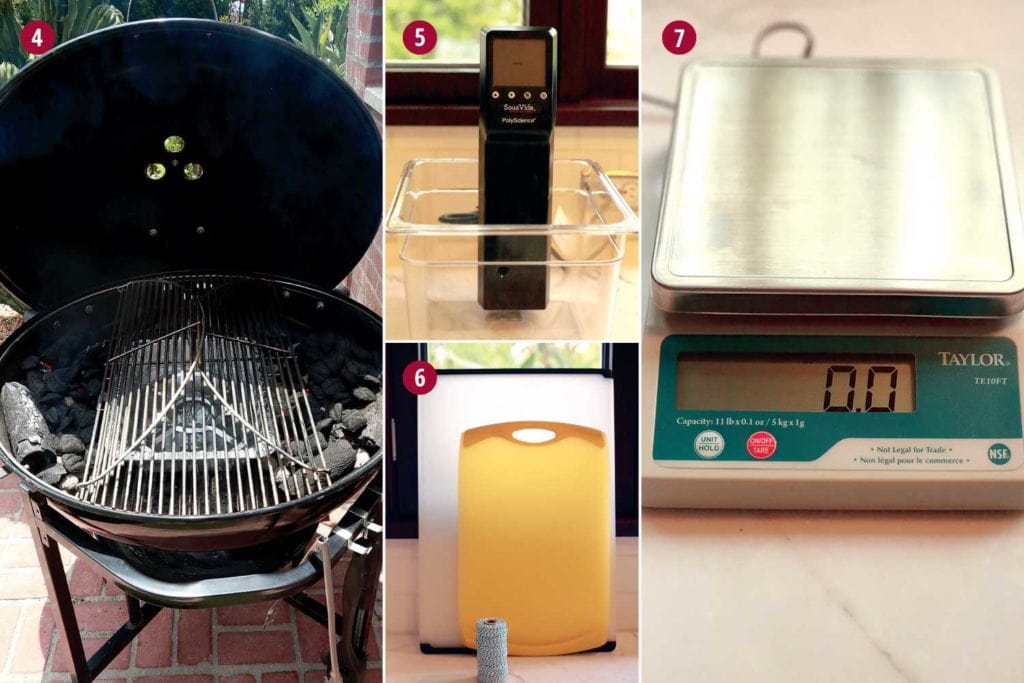
4. Charcoal grill
Many of the recipes on our website call for grilling. Weber kettles represent a minor investment and promise a major boost in flavor. Are you an apartment dweller? See if your building manager will let you put a hibachi on your balcony. Whatever the case, please do not fire up your grill indoors. Also consider using a chimney charcoal starter, available at most hardware stores, and bypass the lighter fluid.
5. Circulating heat pump and heavy-duty plastic bin
If you plan to cook sous vide, you will need a pump and container to keep the water circulating at a constant temperature. You also want to purchase a vacuum-sealer to get an air-tight seal on the cooking bags, in order to cook sous vide safely.
6. Cutting boards
Ideally, you should have separate boards for beef, poultry, produce and baked goods. Realistically? Get a couple of good quality plastic boards and sanitize them between uses in the dishwasher.
7. Digital scale
For the most accurate weight measurement, turn to a digital scale. These are especially useful for baking, when exact weights matter.
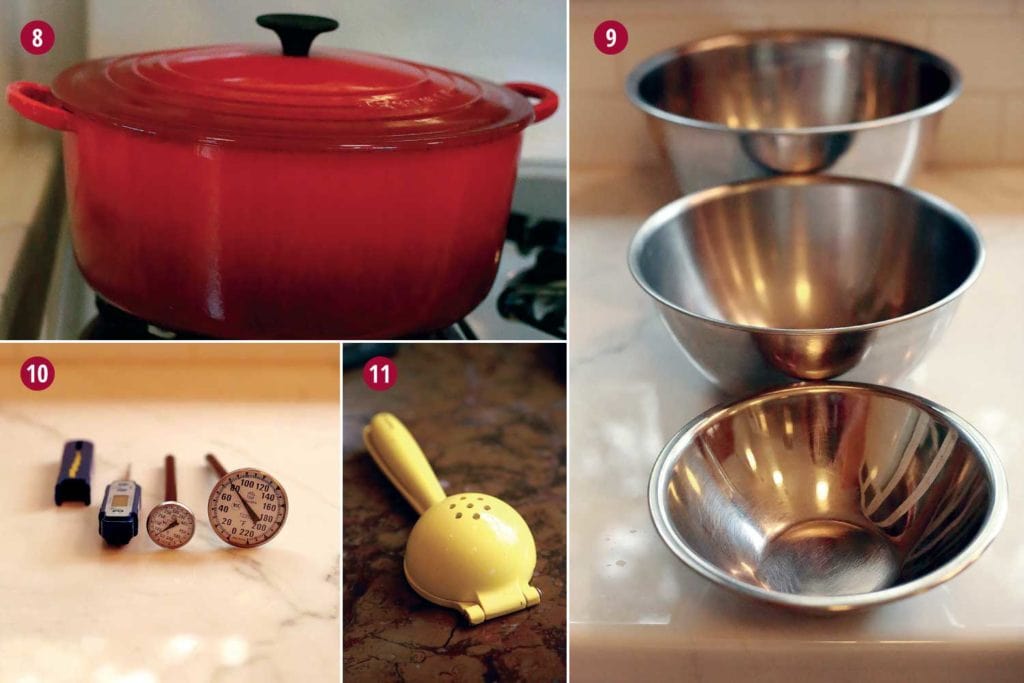
8. Dutch oven or similar large, heavy casserole
Stop charring the bottoms of your stews and soups. Keep a large, heavy-bottomed pot in your cabinet for those preparations. Just make sure the material is flameproof, in case you need to start your recipe on the stove. Some enamel pots are intended for oven use, only, so it pays to check.
9. Mixing bowls of various sizes
Preferably stainless steel. A stainless bowl will not react with acids or proteins and they are more durable than glass, porcelain or wood.
10. Instant-read thermometer
For cooking meats, this might be your most important tool. Professional chefs can feel a piece of meat and gauge the temperature, but unless you’ve cooked thousands of steaks or chops, rely on a thermometer for an accurate read. Most grocery stores sell them now, so do all kitchen stores, such as Sur La Table or Williams-Sonoma, and culinary specialists such as Surfas, Chef’s Toys and Restaurant Depot. Thermometers will vary by dial size and temperature gauge. Another option is a digital thermometer, which quickly and accurately reads temperatures; it is also more expensive.
11. Juice press
This two-sided press makes quick work of juicing citrus fruits; you may want to have a smaller one for lemons and limes and a larger one for oranges. Look for enameled expellers that won’t react with the citric acid.
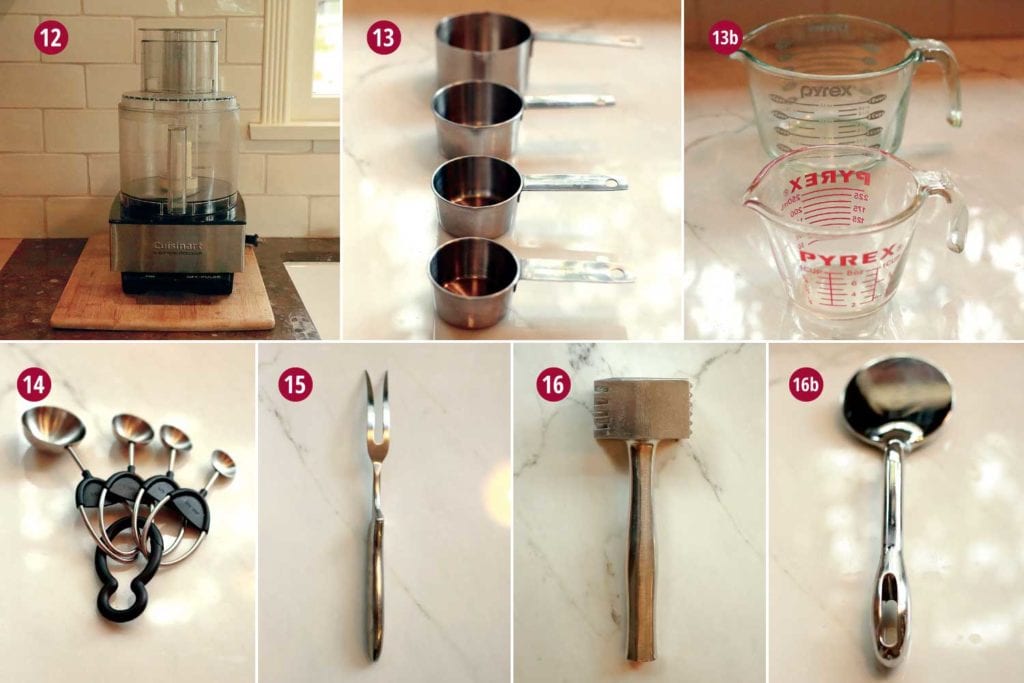
12. Food processor
Whether Cuisinart, Hobart, KitchenAid, or Robot Coupe, invest in a food processor. Suddenly, you won’t dread all those chopping and mincing chores. Sometimes, as with garlic, you may still want to mince the product by hand. Other times, let the machine do the work.
13. & 13b. Measuring cups
Have a set of nesting measuring cups for dry ingredients and (13b) pourable cups for wet ingredients.
14. Measuring spoons
Keep a complete set around (Tablespoon, teaspoon, half-teaspoon, quarter-teaspoon). Remember that measuring spoons can be inaccurate, so when you make a recipe, stick with the same set and wash them if necessary between measurements, that way, the ingredients will be in the right proportion.
15. Meat fork
Sometimes cooked pieces of meat just want to slide off the cutting board. Hold them firmly in place with a meat fork when slicing.
16. & 16b. Meat mallet
Look for one with a hefty weight. Use the spiked sides to tenderize meat, such as for Swiss steak; use the flat sides to pound out and spread meats thin. For delicate meats, such as veal and scallops, a heavy flat pounder (16b) might be preferred.
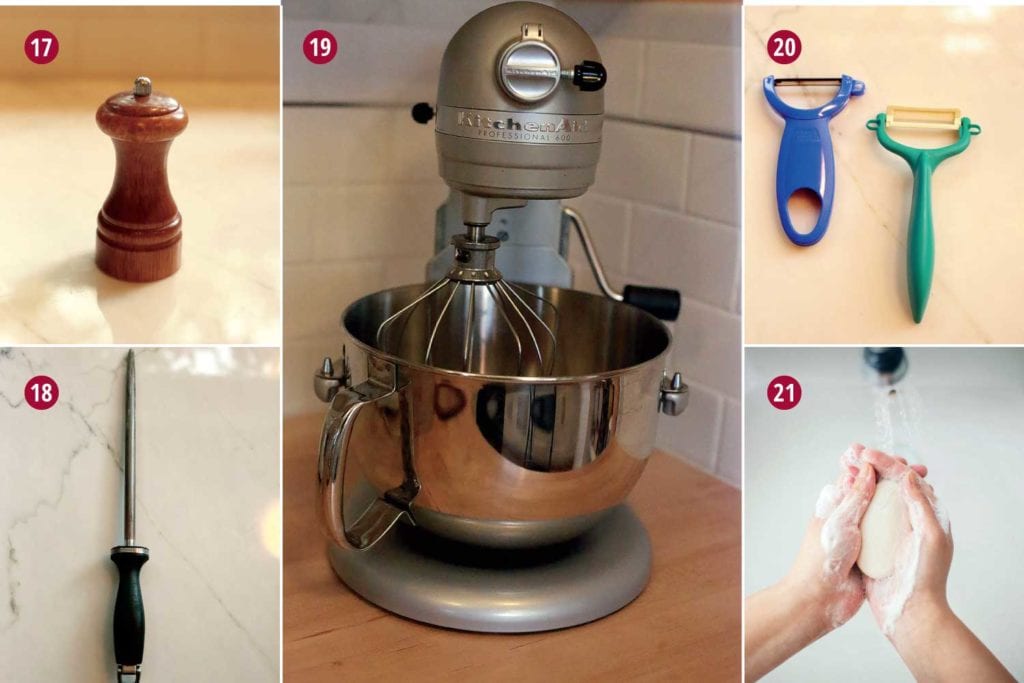
17. Pepper mill
Look in a restaurant kitchen and you’re likely to find pepper grinders in most of the chefs’ tool kits for good reason. Beef in particular has an affinity for pepper. The fresher the grind of the pepper, the more aromatic and clean the flavor.
18. Sharpening steel
A dull knife is more dangerous than a sharp knife. Keep a smooth edge on your knife with a sharpening steel. Remember, however, that a steel does not sharpen the knife, it only smooths (hones) the blade. To create a sharp blade edge, you need a whetstone. If you do not know how to sharpen your knives with a whetstone, take them in at least once a year to a knife sharpening service. When choosing sharpening steels, pick one with a good guard to protect your hands.
19. Stand mixer
The benefit of a stand mixer over a hand mixer is in the name: no hands, leaving them both free to prepare the dough or emulsion. Also, attachments such as a grinder allow you to make your own sausages and hamburger patties.
20. Swiss vegetable peeler
More than just a handy utensil for peeling carrots and potatoes, this sturdy tool will make nice strips of cucumbers and carrots for salads or garnishes and shave cheese and chocolate curls.
21. Washed hands
Your hands are two of the best tools you have in the kitchen. Keep them clean.
